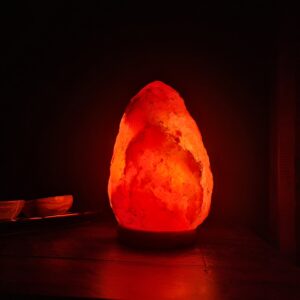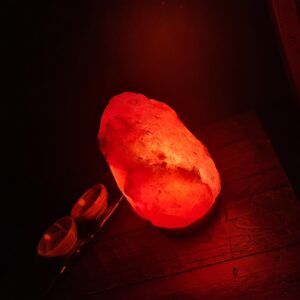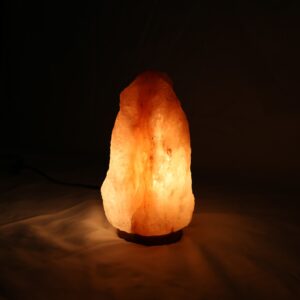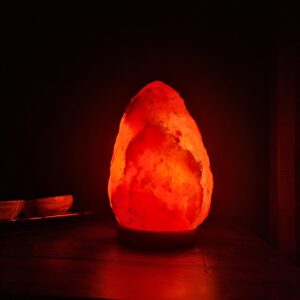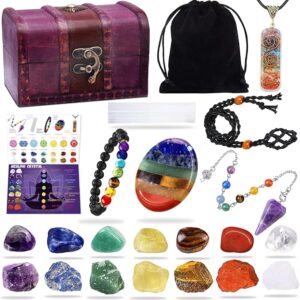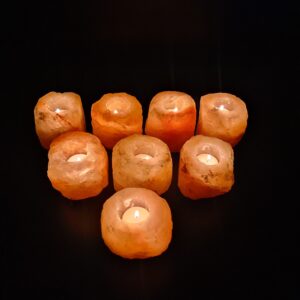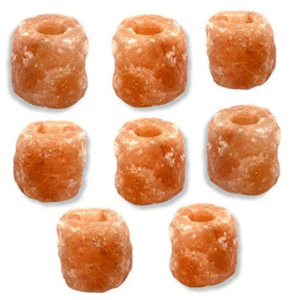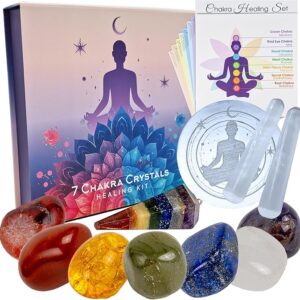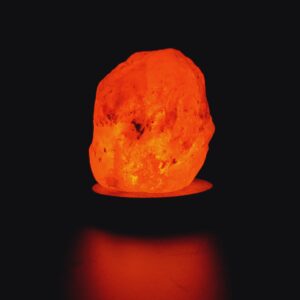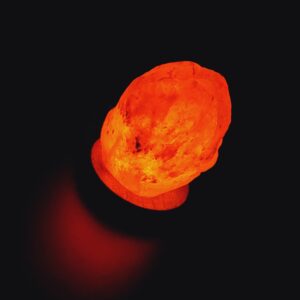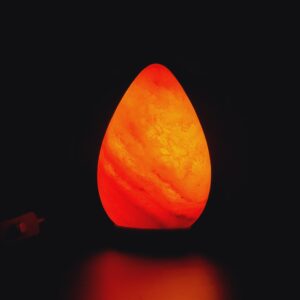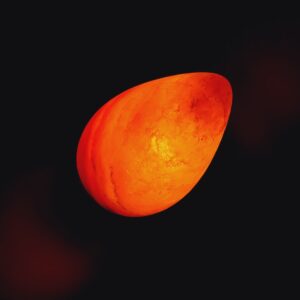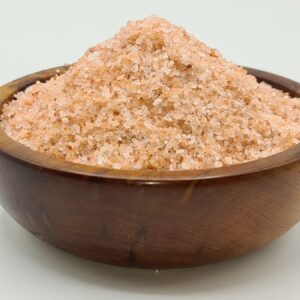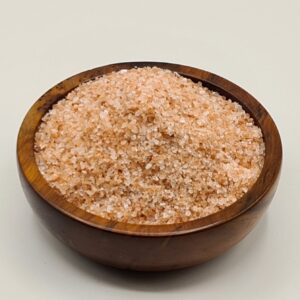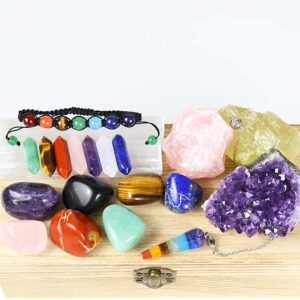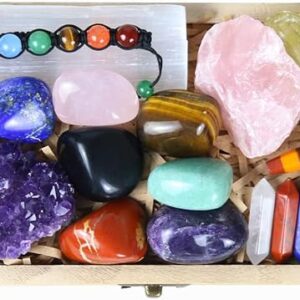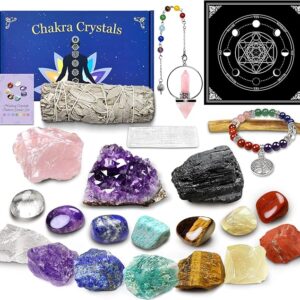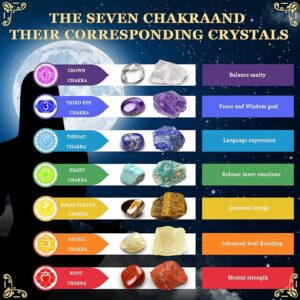Himalayan Crystal
Himalayan Salt Lamps in Pink Himalayan Crystal Salt are a Beautiful Addition to Your Home.
Pink Himalayan Salt Crystals, which are often described as pink Himalayan crystals with a distinct pink color, come from ancient rock sal deposits in Himalayan Region. They offer a mineral-rich substitute to ordinary table salt. Though the scientific support for this salt is not consistent, it's widely used in wellness and purifying practices. This article can be a good read if your curiosity about natural options for salt has you curious. It breaks down the composition, origins and applications of Himalayan, helping you separate facts from fiction to make more informed decisions regarding your health and home.
What is Himalayan Salt?
Himalayan is a type rock salt extracted from ancient deposits millions of years old. Its pink color comes from trace elements. Himalayan table salt is refined and has been stripped of all its natural impurities. These impurities are what give Himalayan its distinctive color. This salt comes out of the Salt Range in Pakistan. Here, vast underground mining produces large blocks used for everything from cooking to decoration.
Himalayan table salt, while primarily made of sodium, is distinguished by its additional minerals. Pink Himalayan salt is typically hand-mined so that its structure can be preserved. It has become a favorite among people looking for more natural options. Himalayan lamps are another example of the salt's versatility. They carve it into glowing fixtures.
Himalayan is rich in essential ions. Its health benefits are not as impressive as claimed. It is not processed and adds a different flavor when used as a table salt.
Where Does Pink Himalayan Crystal Salt Come From?
Khewra Salt Mine lies in Pakistan near the Himalayan Mountain foothills. This mine, the oldest and the largest in the World, taps the salt deposits left behind by ancient seas when they evaporated. Himalayan Mountains influence the naming but the actual mining takes place on the Salt Range.
Himalayan sea salt begins its journey underground. Here, large chunks are extracted from the crystal, which is pinkish in color, while preserving its original form. Himalayan crystal salt is fossilized and untouched by pollution. This purity makes pink Himalayan a popular choice for salt lovers.
A visit to the source reveals how Himalayan crystalline salt is handcrafted in products such as lamps of salt, emphasizing the connection between the Himalayan crystal and the ancient history of the earth. A steady supply is guaranteed by the vast reserves in the mine, making it possible to sell this salt worldwide.
How do Himalayan Crystals Form?
Himalayan minerals, notably the salt varieties, are formed over geological processes of millions of ages, when evaporated ancient bodies left behind concentrated mineral deposits. In the Himalayas these salts were protected from contaminants by tectonic forces. Over time, heat and pressure crystallized sodium with trace element, giving it its distinctive pink color.
This formation is distinct from quartz crystals in the Samadhi region, but Himalayan crystalline has similar structure due to its mineral-rich surroundings. The pink Himalayan stone is formed as large blocks of translucent crystal, which are perfect for carving into functional objects. The process makes sure that the salt is still impurity-free, with iron oxide added for coloring.
Understanding this formation explains why Himalayan is seen as a pristine resource, without the additives of table or sea salt. The purifying properties of this salt are believed to be due to its ancient origins.
What Gives Himalayan Sea Salt Its Pink Colour?
The Himalayan Pink Salt is a result of iron oxides embedded in the crystals, giving it a pinkish to reddish tint. Pink crystals of salt retain the natural impurities that make them so attractive. This coloration marks authentic Himalayan rose salt. The mines from which it is sourced produce unique shades due to mineral variations.
Pink Himalayan Salt is not only attractive, but the color also signals the presence of beneficial minerals, even if in minute quantities. This pinkish color is very popular in Himalayan lamp salts. Its vibrant color sets it aside from table salt.
Consumers choose pink sea salt for its natural colour, believing this to be a sign that the product is of higher quality. However, this color is only a mineral and does not affect the basic composition of sodium chloride.
Himalayan Salt vs. Table Salt - What's Difference?
Himalayan and table salts are different. While the latter is refined and often iodized to a high degree, Himalayan and sea salts remain in their natural form with all trace minerals intact. Pink Himalayan salt is not contaminated with anti-caking agents. Himalayan Crystal salt is perfect for cooking gourmet food and promoting wellness.
Mineral content is one of the key differences. Himalayan sea salt has up to 84 traces elements, but in very small amounts when compared to our daily needs. Table salt, by contrast, focuses only on sodium. Himalayan sea salt can add subtle flavors to food, but the health benefits of using it instead of table salt are minimal.
Himalayan rock sal offers versatility to those seeking natural alternatives, from seasonings and salt blocks for serving, to those interested in exploring natural options. Health-conscious consumers who prefer natural salts will appreciate its unrefined qualities.
What minerals are present in pink Himalayan Salt
The pink Himalayan is rich in trace minerals, such as magnesium, calcium and potassium. Its health benefits are due to these trace minerals. These minerals, although present in small quantities are what distinguish it from refined white table salt. Khewra’s mineral deposits guarantee a consistent and high-quality mineral profile.
Himalayan mineral impurities are iron (which gives it the pink color) and others, some of which, claim its supporters, support electrolyte balancing. Although the differences in composition are minimal, daily consumption of sea salt will not satisfy nutritional needs. Pink salt crystals are translucent and highlight these elements.
Himalayan mineral salt can enhance flavor, but should be viewed as a taste enhancer and not as a mineral supplement. Its pink Himalayan natural crystal form maintains these traces in a genuine way.
What are Himalayan Salt Lamps?
Himalayan crystal salt lamps are decorative objects carved in large blocks from Himalayan rock. They have a bulb that emits an amber-colored glow. These salt lamp, made often from pink Himalayan glass, are popular both for their aesthetic appeal and purported air-purifying abilities. Himalayan lamps are said to remove moisture from air, and then release negativeions when heated.
These lamps can be customized to suit your decor. They are made with rock salt, mined out of Pakistan. Unlike standard lighting, a Himalayan rock salt lamp provides soft illumination, creating a calming ambiance. The crystals allow light to be diffused gently, increasing relaxation.
Himalayan sal lamps, while marketed to promote wellness, are also used as mood enhancers. The natural shade of the salt brings warmth into any room. They are popular because they combine functionality with natural beauty.
Do Himalayan Salt Lamps Have Healing Properties?
Himalayan-salt lamps are often promoted for their healing effects. These include generating negative particles to reduce allergens, and cleaning the air. Heated salt, according to proponents, releases ions neutralizing positive ions generated by electronic devices. These ions are said to promote better sleep and mood. But the scientific evidence that supports these purifying properties are limited. In fact, studies show minimal production of ions.
It's not clear if a Himalayan sal lamp has any health benefits. Although its soothing light may produce a placebo-like effect, the air quality isn't affected significantly. The salt lamps do not perform as well as actual air purifiers. The warmth from the pink Himalayan quartz crystal can help to create a peaceful atmosphere, thereby promoting relaxation.
Himalayan Salt Lamps can be an enjoyable addition to any alternative therapy routine, but you should not expect miracles. The main value of the Himalayan crystal salt lamps lies in their decor, rather than any proven healing.
What are the benefits of using Himalayan Rock Salt every day?
Himalayan Rock Salt can be used for cooking to replace table salt. Simply grind pink salt crystals to impart a light mineral flavor. Himalayan block salt can be used outside of the home to create a cooking surface that heats evenly. This natural salt enhances food without overpowering it.
Himalayan bath salt has similar detoxifying properties to sea salt. For home use, Himalayan quartz-inspired decor like salt lamps adds ambiance. Pink Himalayan Quartz Salt can be used for scrubs or as an inhaler to support respiratory claims.
Himalayan table salt is replaced by Himalayan Himalayan for variety. Its ancient history inspires a connection between nature and modern lifestyles.
Debunking Myths About Pink Himalayan Crystal Salt
There are many myths about pink Himalayan mineral salt. For example, it's superiority over table salt is attributed to the high content of minerals. However, these traces do not provide any health benefits. Himalayan sea salt is said to cleanse the body. But there's no proof that this works better than other salts. It may be romantic that salt from millions of year ago is purer, but there's no evidence to support this.
Tests have shown that there are no significant effects. Although the pink color of Himalayan salt lamps is natural and comes from impurities rather than a sign or superiority, it's not true. Understanding these facts can help consumers appreciate Himalayan quartz for both its taste and appearance.
Himalayan is known for its flavor but it can also be a natural alternative to salt. To make the best decisions, you need to consider all perspectives.
- Khewra Salt Mine of Pakistan produces Himalayan Salt, which was formed in ancient deposits millions of years ago.
- The color of pink Himalayan crystal is due to the trace minerals in it, like iron. It can be distinguished from table sea salt by its distinctive hue.
- It contains potassium and magnesium in small amounts, but not enough to have any health benefits.
- Himalayan lamps are good for ambient lighting, but they do not possess purifying qualities or significant ion release.
- Himalayan rock Salt can be used to enhance the natural appeal of your home without causing any hype.
- Himalayan table salt and sea-salt have similar nutritional benefits, but a distinct flavor.
- It is important to source your Himalayan mineral salt from reliable mines in order to ensure its authenticity and high quality.
POPULAR SEARCHES
himalayan salt lamp | pink salt lamp | onyx gemstone | Selenite Chakra Set | Selenite Bowl | black onyx crystal | Selenite Lamp | Selenite Wand | Orange Selenite | Salt Lamp | Table Lamp

